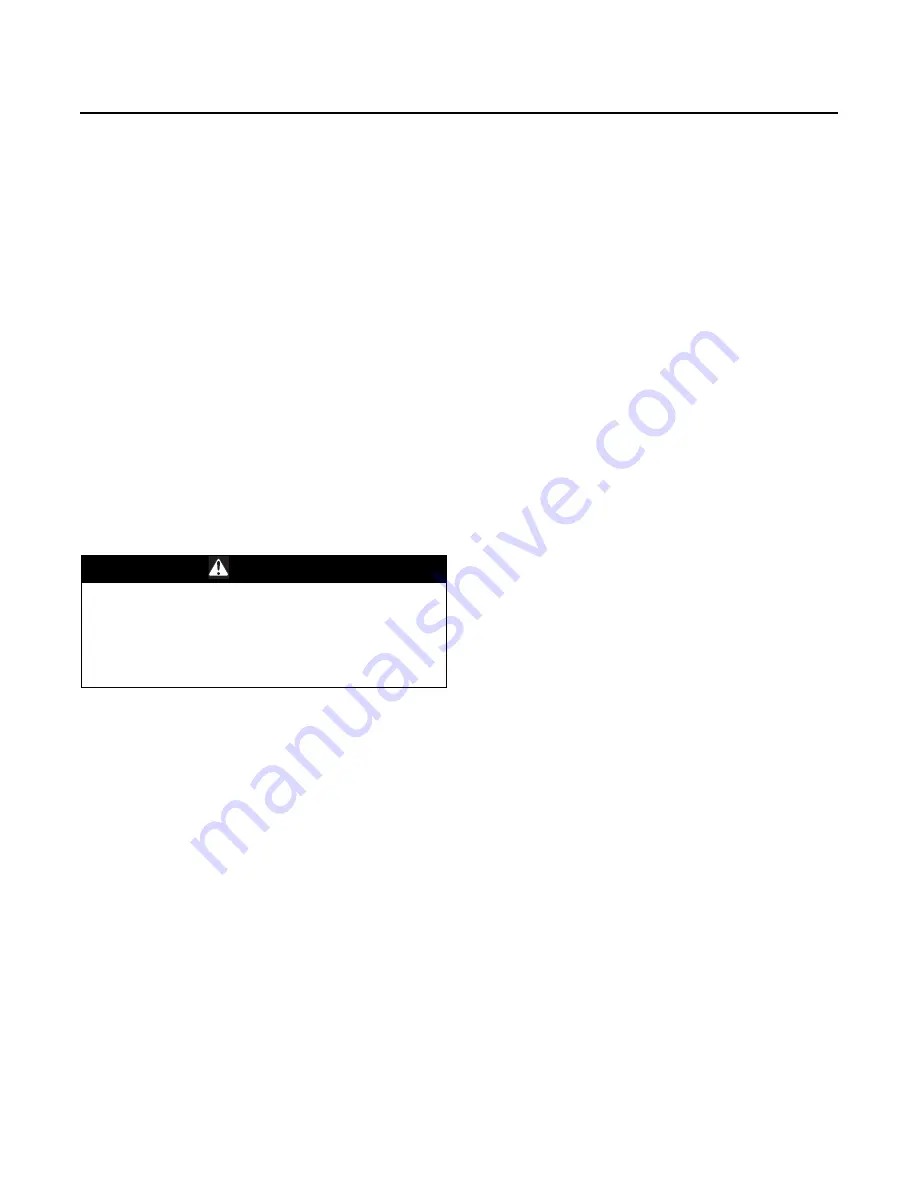
Installation
18
RT-SVX055D-EN
during compressor starts. Oil foaming occurs when
refrigerant condenses in the compressor and mixes with
the oil. In lower ambient conditions, refrigerant migration
to the compressor could increase.
When the compressor starts, the sudden reduction in
crankcase pressure causes the liquid refrigerant to boil
rapidly causing the oil to foam. This condition could
damage compressor bearings due to reduced lubrication
and could cause compressor mechanical failures.
Before starting the unit in the “Cooling” mode, set the
system switch to the “Off” position and turn the main
power disconnect to the “On” position and allow the
crankcase heater to operate a minimum of 8 hours.
Before closing the main power disconnect switch, insure
that the “System”selection switch is in the “Off” position
and the “Fan” selection switch is in the “Auto” position.
Close the main power disconnect switch and the unit
mounted disconnect switch, if applicable.
Checklist
Use the following checklist in conjunction with the general
checklist (
“General Unit Requirements,” p. 14
that the unit is properly installed and ready for operation.
WARNING
Hazardous Voltage!
Disconnect all electric power, including remote
disconnects before servicing. Follow proper lockout/
tagout procedures to ensure the power can not be
inadvertently energized. Failure to disconnect power
before servicing could result in death or serious injury.
•
Check all electrical connections for tightness and
“point of termination” accuracy.
•
Verify that the condenser airflow is unobstructed.
•
Verify that the condenser fan and indoor blower turn
freely without rubbing and are properly tightened on
the shafts.
•
Check the supply fan belts for proper tension and the
fan bearings for sufficient lubrication. If the belts
require adjustment, or if the bearings need lubricating,
refer to the maintenance section of this manual for
instructions.
•
Verify that a condensate trap is installed and the piping
is properly sized and pitched.
•
Verify that the correct size and number of filters are in
place.
•
Inspect the interior of the unit for tools and debris and
install all panels in preparation for starting the unit.











































